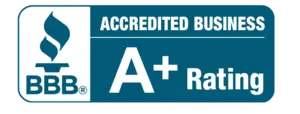A debt validation letter is a letter that debt collectors must provide that includes information about the size of your debt, when to pay it, and how to dispute it. A debt collection letter essentially proves you owe the debt collector money.
Collectors are required by the Fair Debt Collections Practices Act (FDCPA) to send you a written debt validation notice with information about the debt they’re trying to collect. It must be sent within five days of the first contact.
The debt validation letter includes:
The amount owed.a
The name of the creditor seeking payment.
A statement that the debt is assumed valid by the collector unless you dispute it within 30 days of the first contact.
A statement that if you write to dispute the debt or request more information within 30 days, the debt collector will verify the debt by mail.
A statement that if you request information about the original creditor within 30 days, the collector must provide it.
In the complex world of personal finance, dealing with debt can be a daunting task. Whether you’re facing financial difficulties or simply want to ensure the accuracy of the debts reported on your credit report, a debt validation letter can be a powerful tool in your arsenal. This comprehensive guide will walk you through the intricacies of crafting an effective debt validation letter to protect your rights and achieve financial peace of mind.
Understanding the Basics:
Before delving into the specifics of writing a debt validation letter, it’s essential to grasp the fundamental concept behind this legal document. A debt validation letter is a written request sent to a creditor or debt collector, seeking verification and validation of a debt they claim you owe. The Fair Debt Collection Practices Act (FDCPA) grants consumers the right to request validation of a debt within 30 days of being contacted by a debt collector.
The Importance of Debt Validation:
Validating a debt is crucial for several reasons. First and foremost, it ensures that the debt is legitimate and accurate. Mistakes in reporting are not uncommon, and creditors or collection agencies may attempt to collect on debts that are not valid or have already been paid. By requesting validation, you can safeguard yourself against erroneous or fraudulent claims.
Additionally, debt validation is an essential step in protecting your rights as a consumer. The FDCPA grants you the right to dispute the validity of a debt and request detailed information about the alleged debt. This process can also help you identify any violations of your rights by debt collectors, such as harassment or unfair collection practices.
Components of an Effective Debt Validation Letter:
Clear Identification:
Start your letter by clearly identifying yourself and the debt in question. Provide your full name, address, and any relevant account numbers associated with the debt. This information helps the creditor or debt collector accurately locate your account and respond to your request.
Statement of Dispute:
Clearly state that you are disputing the validity of the debt. Use assertive yet respectful language to convey your intention to verify the legitimacy of the debt in accordance with your rights under the FDCPA.
Request for Validation:
Clearly articulate your request for validation of the debt. Specify that you are seeking detailed information about the debt, including the original creditor’s name, the amount owed, the date the debt was incurred, and any relevant account numbers. This information will help you assess the accuracy of the debt and ensure that you are dealing with a legitimate claim.
Verification of Debt:
Emphasize the importance of receiving proper verification of the debt. According to the FDCPA, debt collectors are obligated to provide written verification of the debt, including any relevant documentation supporting the claim. Request that this information be provided to you within 30 days of receiving your letter.
Cease and Desist Language:
Consider including language requesting that the creditor or debt collector cease and desist any collection activities until the debt is validated. This is another right granted to consumers under the FDCPA and can provide you with some relief while you await a response.
Certified Mail:
To ensure that your letter is received and documented, send it via certified mail with a return receipt requested. This provides proof that the creditor or debt collector received your letter and is crucial if any legal action becomes necessary.
Copy of the Letter:
Keep a copy of the debt validation letter for your records. This includes a copy of the letter, the certified mail receipt, and any other relevant documentation. Having a thorough record of your correspondence is important in case you need to escalate the matter or seek legal assistance.
Review State Laws:
Be aware that some states may have specific requirements or regulations regarding debt validation. Research and understand any additional steps or information required by your state’s laws to ensure you are fully compliant.
Conclusion:
In navigating the challenging landscape of personal finance and debt management, a well-crafted debt validation letter can be a powerful tool. By understanding the basics and following the guidelines outlined in this comprehensive guide, you empower yourself to dispute and validate debts effectively, protecting your financial well-being and asserting your rights as a consumer. Remember, knowledge is key, and being informed about the debt validation process can make a significant difference in your financial journey.
If you feel your rights have been violated, call our office at 877-700-5790. We will review your claim and advise you accordingly. Consumer Rights Law Firm has been protecting consumers since 2010. We have an A+ rating with the Better Business Bureau.

